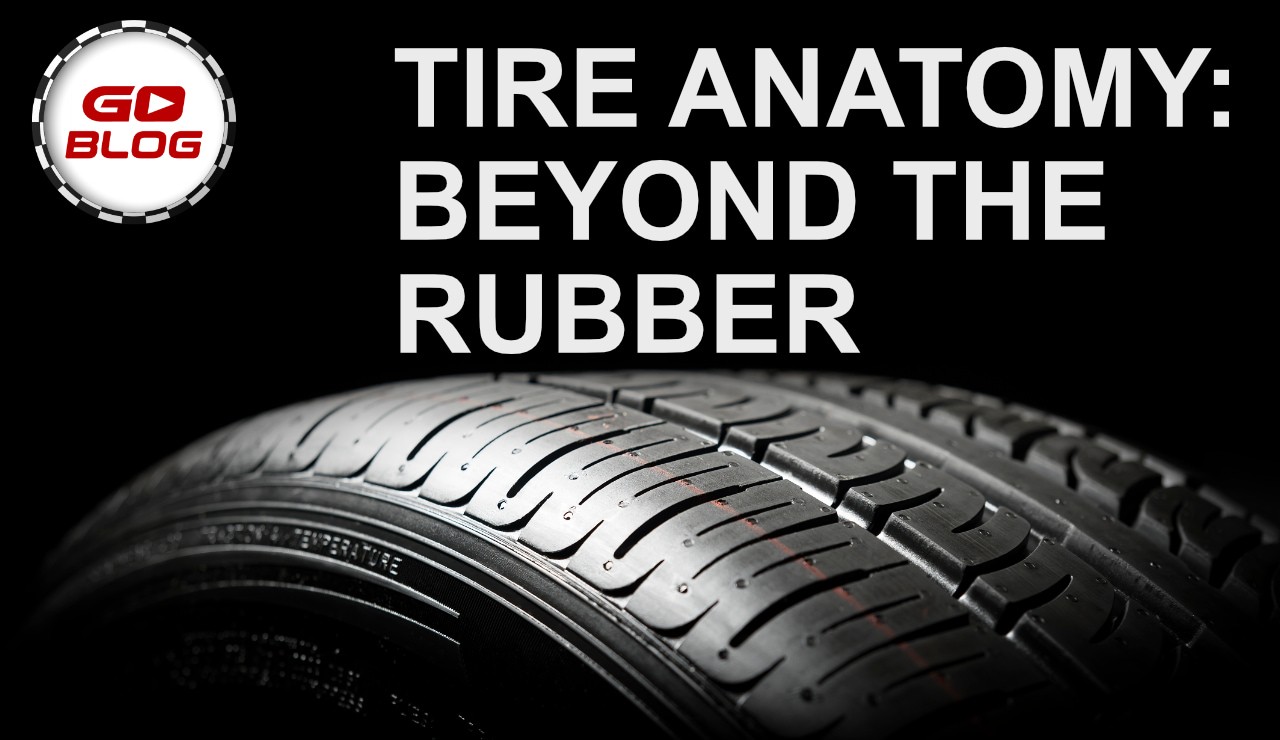The Anatomy of a Tire: What's Inside and Why It Matters for Safety
Posted by WheelSetGo on 25th Oct 2023

The Anatomy of a Tire: What's Inside and Why It Matters for Safety
Tires are an integral part of any vehicle, ensuring safety, performance, and comfort on the road. But have you ever wondered what's inside those rubber rings that carry us miles and miles? At first glance, a tire might seem like a simple piece of rubber, but it's a complex structure made up of various components, each serving a specific purpose. Let's take a deep dive into the anatomy of a tire, breaking it down in layman's terms and understanding its safety implications.

Image Credit: US Tire Manufacturers Association
1. Tread
The tread is the outermost layer of the tire and the part that meets the road. It's made of a rubber compound designed to provide grip, traction, and durability. The patterns on the tread, known as tread patterns, play a crucial role in how the tire performs, especially in different weather conditions.
Safety Implication:The design of the tread directly affects the braking distance of a vehicle. A well-designed tread can ensure optimal grip, reducing the chances of skidding, especially on wet surfaces.
2. Sidewall
The sidewall is the side portion of the tire that contains vital information about the tire, such as its size, type, and performance specifications. It's constructed to resist pressure, provide stability, and protect the inner components of the tire.
Safety Implication:A robust sidewall construction is crucial for a tire's response to sudden obstacles, ensuring that the tire doesn't burst upon impact and maintains its structural integrity.
3. Beads
Beads are the inner edge of the tire that seats against the wheel rim. They create a seal that holds the air inside the tire, ensuring it remains inflated.
Safety Implication:Properly seated beads ensure that the tire maintains its shape and pressure, preventing sudden deflations that can lead to loss of control.
4. Inner Liner
The inner liner is a layer inside the tire that helps keep the air inside, acting as a sort of inner tube. It's designed to be impermeable to air and moisture, ensuring the tire remains inflated at the desired pressure.
Safety Implication:A quality inner liner prevents slow leaks and punctures, ensuring consistent tire pressure, which is vital for vehicle handling and fuel efficiency.
5. Body Plies
Body plies provide the tire with its strength and flexibility. They are layers of fabric, often made of materials like polyester or rayon, that run perpendicular to the tire's tread. These plies are coated with rubber, which helps bond them with other components and seals in the air.
Safety Implication:Strong body plies ensure that the tire can withstand the stresses of the road, including potholes and debris, without tearing or getting damaged.
6. Belt Plies
Located directly beneath the tread, belt plies are typically made of steel, polyester, or other strong materials that provide stiffness to the tread area. This construction enhances the tire's durability and stability, especially at high speeds. Belt plies play a crucial role in the tire's performance, particularly in terms of handling and tread wear.
Safety Implication:Belt plies contribute to the tire's rigidity, ensuring even wear and reducing the risk of blowouts at high speeds. The materials used in the belt plies, such as steel, add an extra layer of protection against punctures and sharp objects on the road.
Conclusion
Tires are marvels of engineering, designed to withstand various terrains, temperatures, and pressures. Understanding the anatomy of a tire gives us a deeper appreciation for the role they play in our daily commutes and adventures, especially in terms of safety. Each component is meticulously designed to ensure that every journey we undertake is as safe as possible. Next time you're on the road, remember the intricate design and technology that's carrying you forward, and the safety implications of each part of your tire.
If you have any questions about tires or need expert advice on choosing the right set for your vehicle, don't hesitate to call us at 320-247-6160. Our team at WheelSetGo is here to assist you!
